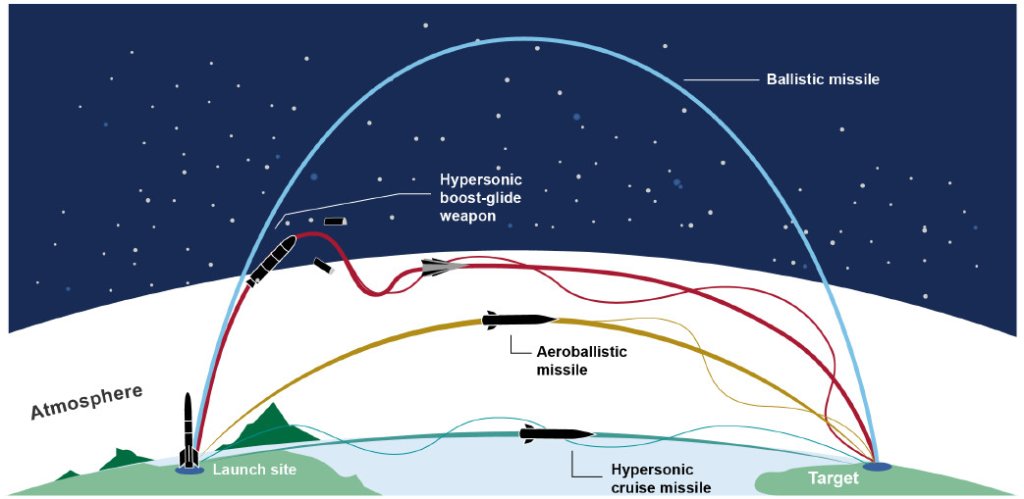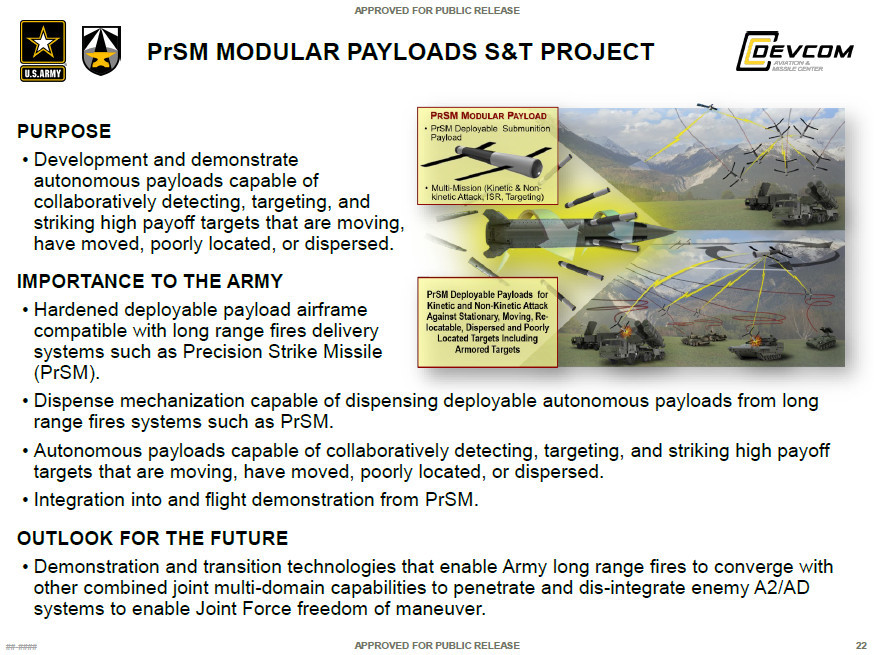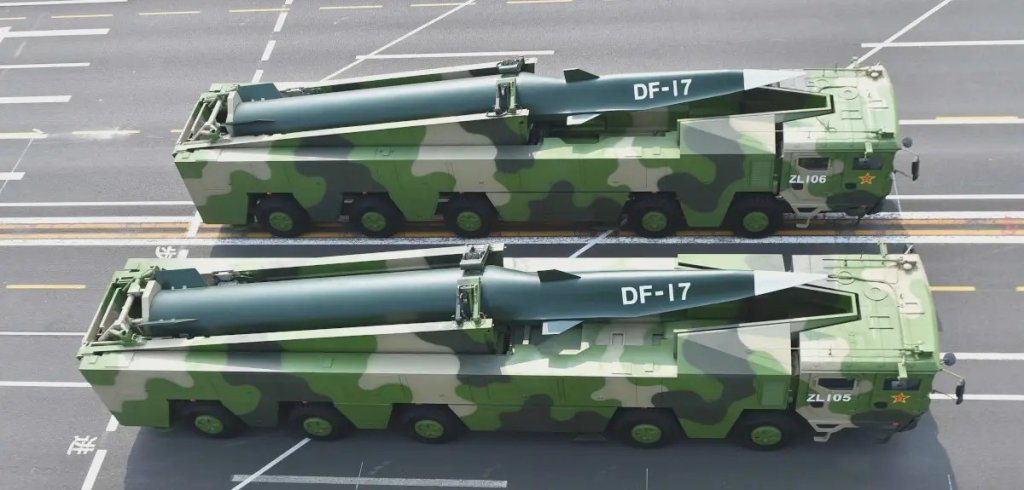A new Chinese concept for an unpowered hypersonic boost-glide weapon loaded with different types of submunitions, including supersonic missiles and drones, has emerged. Boost-glide vehicles already present significant challenges for defenders and one loaded with various sub-payloads could carry out kinetic strikes and non-kinetic operations like electronic warfare, as well as reconnaissance, against multiple targets across a broader area. While a weapon of this kind could present numerous benefits and additional complications for defenders, releasing payloads from a platform traveling at hypersonic speed also presents substantial technological challenges.
A model of the new unpowered hypersonic boost-glide vehicle concept, called the GDF-600, and some of its payloads are on display at this year’s Zhuhai Airshow in China, which formally opens tomorrow. The design comes from the Guangdong Aerodynamic Research Academy (GARA). GARA previously came to more widespread attention in 2022 with its unveiling of the MD-22, ostensibly an uncrewed hypersonic testbed that continues to have limited details, at that year’s Zhuhai Airshow.
The wedge-shaped GDF-600 can be launched with a total weight of up to around 11,000 pounds (five and a half tons or 5,000 kilograms), including a payload of submunitions weighing up to 2,645.5 pounds (1,200 kilograms), according to information at GARA’s booth at Zhuhai. The vehicle is said to be able to reach a peak speed of Mach 7 and have a maximum range of between approximately 124 and 370 miles (200 and 600 kilometers). Hypersonic speed is typically defined as anything above Mach 5.
GARA has put forward five different potential payload types for the GDF-600: supersonic and subsonic missiles, a “patrol projectile” (which appears to be a loitering munition or kamikaze drone), an uncrewed aerial system (UAS), and an unpowered kinetic strike munition. The GDF-600 model shows a mixed load of six “patrol projectiles,” six UAS, and 13 subsonic missiles.
Unpowered boost-glide vehicles, in general, use some means to get to an optimal speed and altitude via a rocket booster, before soaring back down to their target. The weapon’s range is dependent in part on how high and fast it gets to begin with and GARA says the GDF-600’s trajectory can crest at up to some 131,233.5 feet (40 kilometers). There does not appear to be any specific mention of a particular launch platform for the GDF-600, but it could be adaptable to a ground, air, and/or sea-based weapon system.
Hypersonic boost-glide weapons also travel along largely shallow atmospheric flight paths to their targets and are capable of making erratic movements along the way. The combination of speed and maneuverability creates significant complications for defenders, including reducing the total amount of time available to react at all, let alone attempt an intercept.

The value of the additional ability to release sub-payloads, potentially at several points along the boost-glide vehicle’s flight path, is clear. A single boost-glide weapon would therefore have the ability to strike multiple targets (and different target sets) and do so across a broad area. The sub-payloads, especially drones, can be configured to carry out electronic warfare and other non-kinetic attacks and/or perform other tasks, including immediate bomb damage assessment and reconnaissance, as well as just acting as decoys. All of this only increases the challenges for defenders.
In addition, some of the submunition types GARA has put forward would have the ability to substantially increase the overall range of the complete system. It says that the supersonic missiles can travel up to 310 miles (500 kilometers) from their launch point. If they were released in the terminal phase of the GDF-600’s flight, this can almost double the range of the entire weapon. The sub-payloads at that point would also have benefited from the boost-glide vehicle’s initial penetration through layers of an enemy’s air and missile defense network.
As described now, especially given its range, the GDF-600 would seem more optimized for employment in a more regional context, such as a Taiwan Strait or South China Sea scenario. However, GARA claims its new submunition-laden hypersonic glide vehicle concept could be scaled up to a design offering an intercontinental range of up to 3,728 miles (6,000 kilometers).
It’s interesting to note here that the U.S. Army has been looking into the possibility of adding submunition payloads, including small drones, to future iterations of its Precision Strike Missile (PrSM). The PrSM is a short-range ballistic missile that can also evolve into a longer-range weapon. The PrSM is set to replace the Army Tactical Missile System (ATAMCS) short-range ballistic missile in Army service, which was also originally designed to carry a traditional cluster munition warhead with hundreds of small bomblets.

At the same time, it is unclear how advanced GARA’s work on the GDF-600 might be at this time. Launching payloads from something traveling at hypersonic speeds presents its own relatively massive technological challenges, particularly due to physical and thermal stresses, especially at the time of separation. More fragile payloads like drones would require some means of safely slowing down to subsonic speeds first.

Wedge-shaped hypersonic boost-glide vehicles are also understood to be more complex to begin with than conical types.
The Chinese People’s Liberation Army (PLA) has operationally fielded at least one wedge-shaped hypersonic boost-glide vehicle weapon that is launched from the ground via a missile-like booster, the DF-17. The U.S. government also says that China has successfully tested a novel nuclear-capable orbital weapon system that includes a hypersonic glide vehicle capable of launching sub-payloads, which also underscores a general interest in the kinds of capabilities the GDF-600 can offer.

If nothing else, the GDF-600 reflects the PLA’s significant and still-growing investments in the development and fielding of hypersonic weapons, including air and ship-launched types. This also now comes as the U.S. military has faced significant issues in its own work in this regard, especially when it comes to hypersonic boost-glide vehicle designs. The future of the U.S. Air Force’s AGM-183A Air-Launched Rapid Response Weapon (ARRW), or a potential follow-on program, remains notably murky. The U.S. Army has also faced setbacks with its Dark Eagle hypersonic missile program, a weapon being developed in cooperation with the U.S. Navy.
The GDF-600, if it becomes a reality, could be an important new step for China’s hypersonic arsenal.
Contact the author: joe@twz.com
